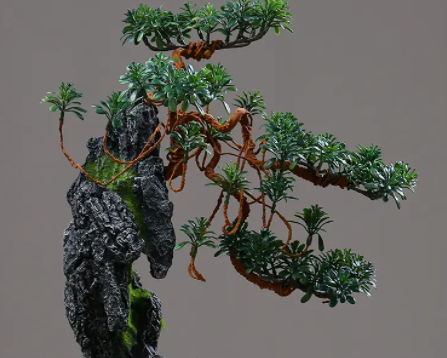
- Home
- About us
- Product
- Cases
- News
- Contact us
- Message
Rockery can organize and divide space
The garden space is divided and divided according to the characteristics of large-scale buildings of rockery, and the space is divided into various spatial forms with different sizes, shapes and changes. Through the insertion, separation, pinching, enclosure and convergence of rockeries, the flow space of mountain roads, the closed space of mountain depressions, the arch space of caves, the deep space of valleys and other distinctive space forms can be created in the rockery area. Rockery can also lead the sight or viewpoint of tourists to high or low places, creating a space scene of looking up and down.
Rockery can adapt to local conditions and coordinate the environment
Garden rockery can provide more types of environment than flat terrain. In the plastic stone rockery area, the conditions of different slopes, different slope directions, different lighting conditions, different soil properties and different ventilation conditions can be found everywhere, which provides many good growth environment conditions for various plants with different ecological habits, and is conducive to improving the ecological quality and plant landscape quality of the rockery area.
Plastic stone rockery is a landscape sketch and embellishment
Rockery and stone landscape are the artistic representation of natural mountain landscape in gardens. In the courtyard, beside the Garden Road, on the square, beside the pool, at the corner of the wall, and even in the roof garden, the rockery and stone scenery can also be used as garden sketches to decorate the landscape, add interest, and play the role of creating and lighting the landscape. The natural landscape images such as strange peaks and rocks, cliffs and cliffs, overlapping peaks, deep gorges and valleys, spring stone caves, and island rock reefs can be reproduced in the garden through plastic stone rockery.

Scan this code to start a WhatsApp chat with Huizhou City Qi Da TechScape Co.,Ltd..





Head Office Address:Flat A3, 9/F, Gee Fat Factory Building, 80 Fuk Tsun Street, Tai Kok Tsui, Kowloon, Hong Kong.
